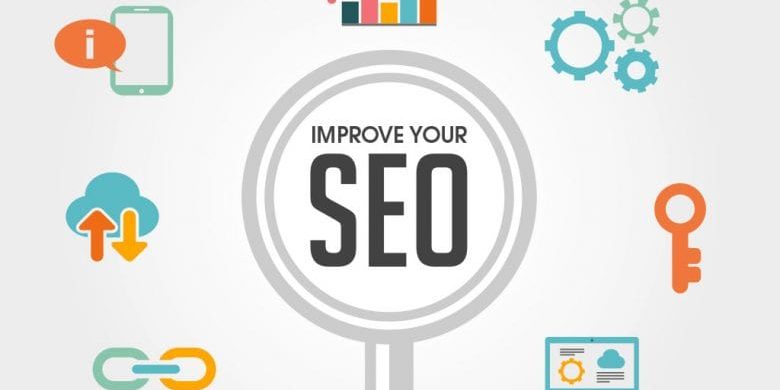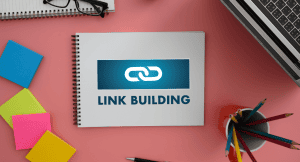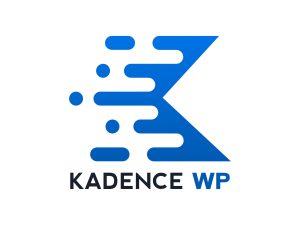Introduction
In today’s fast-paced digital world, website load speed is more critical than ever. A slow-loading site can frustrate users, increase bounce rates, and significantly impact your search engine rankings. With Google prioritizing user experience, having a speedy website is no longer optional; it’s a necessity. This guide will walk you through actionable steps to improve your website load speed, enhancing both your SEO and user experience.
I. Analyze Current Website Performance
Before you can improve your website's load speed, you need to understand where you currently stand. This involves analyzing key performance metrics using reliable tools.
A. Use Performance Testing Tools
Several tools can help you measure your website's speed and performance. Some of the most popular ones include:
- Google PageSpeed Insights: This tool provides detailed insights into your website’s performance on both mobile and desktop devices. It offers specific suggestions for improvement and highlights critical areas to address.
- GTmetrix: GTmetrix analyzes your site and provides a comprehensive report on load speed, performance scores, and recommendations for optimization.
- Pingdom: Pingdom offers website speed testing from multiple locations around the world, giving you a broad view of your site’s performance.
B. Identify Key Performance Metrics
Understanding the metrics these tools provide is crucial for diagnosing and addressing performance issues. Key metrics to focus on include:
- Load Time: The total time it takes for a page to fully load. Ideally, this should be under 3 seconds.
- Time to First Byte (TTFB): The time it takes for the server to respond to the first request. A lower TTFB indicates a more responsive server.
- First Contentful Paint (FCP): The time it takes for the first piece of content to appear on the screen. This metric is crucial for user perception of speed.
- Largest Contentful Paint (LCP): The time it takes for the largest element on the page to load. LCP is a key metric for user experience.
- Cumulative Layout Shift (CLS): This measures visual stability. A low CLS score ensures that the page doesn't shift unexpectedly, improving user experience.
II. Optimize Images
Images often make up the largest part of a webpage's load, and optimizing them can significantly improve load speed. Here are some effective strategies to optimize images:
A. Image Compression
Compressing images reduces their file size without significantly affecting quality.
- Tools: Use tools like TinyPNG, JPEG-Optimizer, or ImageOptim to compress your images. These tools can reduce file sizes by 50-80% while maintaining visual quality.
- Lossy vs. Lossless Compression:
- Lossy Compression: Removes some image data to reduce size, which may slightly affect quality. Suitable for web images where a small quality loss is acceptable.
- Lossless Compression: Reduces file size without losing any data. Best for images requiring high detail, such as logos or professional photography.
B. Use Correct Image Formats
Choosing the right image format can also help reduce load times.
- WebP: WebP is a modern image format that provides superior compression compared to JPEG and PNG without losing quality.
- SVG: For vector graphics, SVG (Scalable Vector Graphics) is ideal as it scales perfectly without losing quality and usually has a smaller file size compared to other formats.
C. Implement Lazy Loading
Lazy loading defers the loading of images until they are needed, improving initial load times and saving bandwidth.
- Lazy Loading: Load images only when they are in the viewport. This means images below the fold (not immediately visible) are loaded only when the user scrolls down. Implement lazy loading using native HTML attributes (
loading="lazy") or JavaScript libraries.
III. Minimize and Optimize Code
Optimizing your website’s code can significantly improve load speed by reducing the amount of data that needs to be transferred and processed.
A. Minify CSS, JavaScript, and HTML
Minification involves removing unnecessary characters from your code, such as spaces, comments, and line breaks, without affecting its functionality.
- Tools: Use tools like UglifyJS for JavaScript, CSSNano for CSS, and HTMLMinifier for HTML. These tools can automatically minify your code, reducing file sizes and improving load times.
B. Remove Unused CSS and JavaScript
Over time, websites accumulate unused CSS and JavaScript, which can slow down load times.
- Tools: Tools like PurifyCSS can analyze your website’s code and remove any unused CSS. Similarly, tools like Webpack can help you identify and eliminate unused JavaScript.
- Manual Cleanup: Regularly review your codebase to identify and remove unnecessary code.
C. Asynchronous Loading for CSS and JavaScript
Asynchronous loading allows CSS and JavaScript files to load independently of the rest of the page, preventing them from blocking the rendering of other content.
- Async and Defer Attributes: Use the
asyncanddeferattributes for JavaScript files to control their loading behavior. Theasyncattribute loads the script asynchronously, whiledeferensures the script is executed after the HTML document is fully parsed. - Critical CSS Inlining: Inline critical CSS directly into the HTML document to ensure it loads quickly. This method can speed up the rendering of above-the-fold content.
IV. Improve Server Response Time
Improving your server’s response time is crucial for faster load speeds and a better user experience. Here are some strategies to achieve this:
A. Choose a Reliable Hosting Provider
Your hosting provider plays a significant role in your website’s performance.
- Shared Hosting vs. VPS vs. Dedicated Server:
- Shared Hosting: Suitable for small websites with low traffic. It’s cost-effective but may suffer from performance issues due to shared resources.
- Virtual Private Server (VPS): Offers better performance than shared hosting by providing dedicated resources. It’s a good balance between cost and performance.
- Dedicated Server: Ideal for high-traffic websites requiring maximum performance. It provides dedicated resources but is more expensive.
B. Use a Content Delivery Network (CDN)
A CDN distributes your website’s content across multiple servers worldwide, reducing load times for users regardless of their location.
- Benefits of CDNs: CDNs reduce latency, improve load times, and provide redundancy, ensuring your site remains accessible even if one server goes down.
- Popular CDNs: Some widely-used CDNs include Cloudflare, Akamai, and Amazon CloudFront. These services cache your content and serve it from locations closer to your users.
C. Enable Caching
Caching stores copies of your website’s files, allowing them to be served quickly without generating new requests to the server.
- Browser Caching: Configure your server to instruct browsers to cache static files (like images, CSS, and JavaScript) for a specified period.
- Server-Side Caching: Implement server-side caching solutions like Varnish or NGINX to cache dynamic content. This reduces server load and speeds up response times.
- Tools and Plugins: Use caching plugins such as W3 Total Cache or WP Super Cache if you’re running a WordPress site. These plugins simplify the caching process and offer various customization options.
V. Optimize Web Fonts
Web fonts can enhance the visual appeal of your website, but if not optimized, they can also slow down your load times. Here are some ways to optimize web fonts:
A. Use Modern Font Formats
Using modern font formats can improve loading times and reduce file sizes.
- WOFF2: Web Open Font Format 2 (WOFF2) is the best choice for web fonts. It offers better compression compared to older formats like TTF, OTF, and WOFF, resulting in faster load times.
B. Limit the Number of Font Variations
Using too many font weights and styles can increase load times.
- Fewer Weights and Styles: Stick to a minimal number of font weights and styles. For example, instead of using five different weights of the same font, try to limit it to two or three.
- Combine Font Requests: If you’re using multiple Google Fonts, combine them into a single request to reduce the number of HTTP requests.
C. Implement Font Loading Strategies
Efficient font loading strategies can ensure that text remains visible and readable during the loading process.
- Font-Display Property: Use the
font-display: swapproperty in your CSS. This ensures that system fonts are displayed while the web font loads, preventing invisible text and improving perceived load times.
VI. Reduce Server Load
Reducing server load is essential for maintaining a fast and responsive website. Here are some strategies to achieve this:
A. Database Optimization
A well-optimized database can significantly improve load times, especially for content-heavy websites.
- Regularly Clean Up the Database: Remove unnecessary data, such as old revisions, spam comments, and unused tables. Plugins like WP-Optimize can automate this process for WordPress sites.
- Optimize Database Queries: Ensure your database queries are efficient. Use indexing to speed up query performance and avoid running complex queries that slow down the server.
B. Reduce Redirects
Excessive redirects can create additional HTTP requests, slowing down your site.
- Minimize HTTP Requests: Reduce the number of redirects by updating old URLs to direct users to the final destination. This cuts down on unnecessary requests and improves load times.
C. Enable Compression
Compressing files reduces their size, leading to faster load times and reduced server load.
- Gzip or Brotli Compression: Enable Gzip or Brotli compression on your server to reduce the size of HTML, CSS, and JavaScript files. This can be done via server configuration or through plugins.
VII. Mobile Optimization
With a significant portion of web traffic coming from mobile devices, optimizing your website for mobile is crucial for improving load speed and user experience.
A. Ensure Mobile Responsiveness
Your website should adapt seamlessly to different screen sizes and devices.
- Responsive Design Techniques: Use flexible grids, fluid images, and media queries to create a responsive design. Tools like Bootstrap or CSS frameworks can help streamline this process.
- Viewport Meta Tag: Include the viewport meta tag in your HTML to ensure proper scaling and layout on mobile devices:
html
<meta name="viewport" content="width=device-width, initial-scale=1">
B. Optimize Mobile-Specific Elements
Optimize elements specifically for mobile users to improve load times and user experience.
- Reduce Mobile-Specific Load Times: Minimize the use of heavy elements and scripts on mobile versions of your site. Consider serving smaller images and using simpler layouts for mobile users.
- Accelerated Mobile Pages (AMP): Implement AMP to create fast-loading mobile pages. AMP strips down HTML and follows a set of performance guidelines to ensure quick load times.
VIII. Regular Monitoring and Maintenance
Regular monitoring and maintenance are essential to ensure your website continues to perform well and load quickly. Here’s how to keep your website in top shape:
A. Regular Performance Audits
Conducting regular performance audits helps identify issues before they impact user experience.
- Scheduled Testing and Monitoring: Set up a schedule to regularly test your website’s performance using tools like Google PageSpeed Insights, GTmetrix, and Pingdom. Regular monitoring helps you catch and address performance issues promptly.
B. Keep Software Updated
Outdated software can lead to security vulnerabilities and performance issues.
- Update CMS, Plugins, and Themes: Regularly update your content management system (CMS), plugins, and themes to the latest versions. Updates often include performance improvements and security patches.
C. Address Performance Issues Promptly
Quickly addressing performance issues ensures your site remains fast and user-friendly.
- Monitor Analytics for Performance Drops: Use tools like Google Analytics to monitor your website’s performance. Look for any drops in speed or increases in bounce rates, which can indicate performance issues.
Conclusion
Improving your website’s load speed is crucial for both SEO and user experience. By analyzing your current performance, optimizing images and code, improving server response time, reducing server load, and ensuring mobile optimization, you can significantly enhance your website’s speed. Regular monitoring and maintenance will help you stay on top of any performance issues and keep your site running smoothly. Implement these strategies, and you’ll not only improve your SEO rankings but also provide a better experience for your users.







